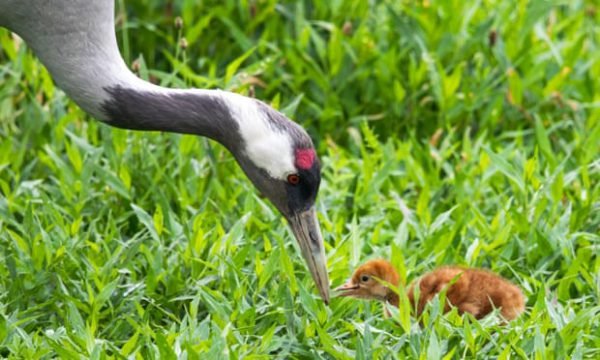Cranes, which were driven into extinction in Britain due to hunting and habitat loss, have continued to increase in population with a record 64 pairs recorded in a survey conducted recently.
Researchers and conservationists now estimate that there are a total of 200 pairs of cranes in the United Kingdom. They believe that the last five years have been very productive for these species as more than half of the cranes that have fledged since 1980 have done so in the last half decade.
Known for their famous dance, these cranes stand at a height of 120 centimetres and are renowned for their displays of dance to court their partners.
Unfortunately, cranes became extinct in the United Kingdom in the 1600s. However, a few of these birds came back to Norfolk in 1979 as a result of a combination of conservation efforts and natural return. The conservation efforts included restoring peatland and protecting wetlands.
One major conservation initiative that helped increase the numbers of these birds is the Great Crane Project. Initiated in collaboration with the Royal Society for the Protection of Birds (RSPB), Wildfowl and Wetlands Trust, and the Pensthorpe Conservation Trust, this campaign has been critical in helping to restore the number of cranes by creating and improving existing habitat, as well as hand-rearing young birds for release on the Somerset Levels and Moors.
Damon Bridge, chairman of the UK Crane Working Group said, “The return of cranes to the British landscape shows just how resilient nature can be when given the chance.
“If we want to see this success continue then these sites that cranes use and need must get adequate protection.”
Andrew Stanbury, RSPB conservation scientist, added, “If we want to see this amazing achievement repeated across the UK, governments must take action to designate the most important sites for this iconic species as part of the UK’s protected area network.”
We hope that governments across nations will use this project as an example to restore the natural habitat of all animals to help them thrive. After all, the Earth belongs to all of us equally. Doesn’t it?
0